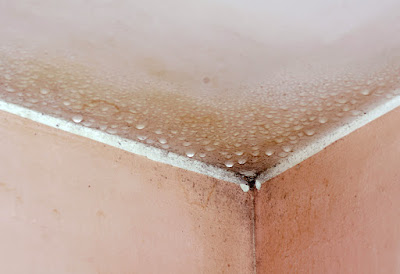What is Mold?
Most people know that mold in your home is not a good thing, and that if you have mold, it needs to be removed. That's about the extent of the knowledge that the general public has about mold. So what is mold exactly? In today's blog, your local Lee County mold removal company explains the basics of this interesting fungi.
Mold is the term used to refer to fungi that grow in the form of multi-cellular thread-like structures. It can be found indoors and out, almost everywhere, year round. It travels through the air, attaching to structures like drywall, flooring, etc. Mold actually digests what it is growing on using enzymes that break down the material the mold is living on. In order for mold to grow, there must be water or moisture present, a food source of oxygen is needed, and a temperature between 40-100°F. The spores and hair-like bodies of individual mold colonies are too small for us to see without a microscope. However, when mold is growing on a surface, it often appears black, blue or green. The color of the mold is determined by the type of mold, and is also influenced by the nutrient sources, surface substrate and the age of the colony. Under the right conditions, mold can rapidly multiply, often going undetected, and become a problem in your home.
Some types of mold cause disease or food spoilage, while others play an important role in biodegradation or in the production of various foods, beverages, antibiotics and enzymes. Mold can also be found in damp building materials, where it often appears like a stain, coming in a variety of colors. This type of mold can multiply on most porous surfaces, where there is damp, stagnant air. Most commonly this type of mold can be found in or on wallpaper, drywall, ductwork, ceiling tiles, carpet, drapes, furniture, attics, basements, crawlspaces, books, magazines or anything else made of paper or organic material. Out of the several hundred thousand species of molds, there are only about 16 that are known as toxic molds. These species of mold can release mycotoxins which are toxic to humans and animals. Some of the most common types of toxic mold are: Aspergillus, Fusarium, Paecilomyces, Penicillium, Stachybotrys and Trichoderma. Contrary to popular belief, not all black mold is toxic mold. That's why if you suspect black mold and are having any symptoms, such as exasperated allergies or an increase in asthma attacks, you should hire someone for professional mold testing in Florida.
If you see or smell mold in your home, there is a potential health risk. The effects of mold aren't limited to your health, but also include the potential for structural damage to your home. Any suspicion of mold should be addressed by a professional mold company such as Catalyst Mold Solutions. We're here for all your Southwest Florida mold removal and prevention needs!
 What is Mold?
What is Mold?
Mold is the term used to refer to fungi that grow in the form of multi-cellular thread-like structures. It can be found indoors and out, almost everywhere, year round. It travels through the air, attaching to structures like drywall, flooring, etc. Mold actually digests what it is growing on using enzymes that break down the material the mold is living on. In order for mold to grow, there must be water or moisture present, a food source of oxygen is needed, and a temperature between 40-100°F. The spores and hair-like bodies of individual mold colonies are too small for us to see without a microscope. However, when mold is growing on a surface, it often appears black, blue or green. The color of the mold is determined by the type of mold, and is also influenced by the nutrient sources, surface substrate and the age of the colony. Under the right conditions, mold can rapidly multiply, often going undetected, and become a problem in your home.
 Types of Mold
Types of Mold
Some types of mold cause disease or food spoilage, while others play an important role in biodegradation or in the production of various foods, beverages, antibiotics and enzymes. Mold can also be found in damp building materials, where it often appears like a stain, coming in a variety of colors. This type of mold can multiply on most porous surfaces, where there is damp, stagnant air. Most commonly this type of mold can be found in or on wallpaper, drywall, ductwork, ceiling tiles, carpet, drapes, furniture, attics, basements, crawlspaces, books, magazines or anything else made of paper or organic material. Out of the several hundred thousand species of molds, there are only about 16 that are known as toxic molds. These species of mold can release mycotoxins which are toxic to humans and animals. Some of the most common types of toxic mold are: Aspergillus, Fusarium, Paecilomyces, Penicillium, Stachybotrys and Trichoderma. Contrary to popular belief, not all black mold is toxic mold. That's why if you suspect black mold and are having any symptoms, such as exasperated allergies or an increase in asthma attacks, you should hire someone for professional mold testing in Florida.
If you see or smell mold in your home, there is a potential health risk. The effects of mold aren't limited to your health, but also include the potential for structural damage to your home. Any suspicion of mold should be addressed by a professional mold company such as Catalyst Mold Solutions. We're here for all your Southwest Florida mold removal and prevention needs!
Catalyst Mold Solutions: Your Permanent Solution to Mold!
Catalyst Mold Solutions
1217 Cape Coral Parkway East
Cape Coral, FL 33904
Phone: 866-343-6653





Comments
Post a Comment